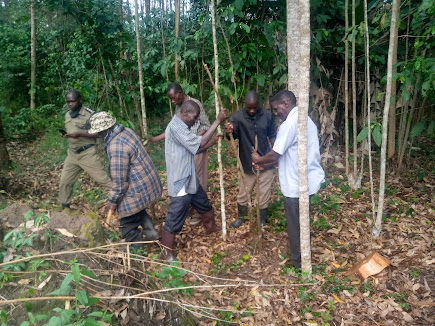Restoring Kasaana- Nabyewanga wetland ecosystem in Lwengo District

Kasaana- Nabyewanga wetland is located in Lwengo District, where the ACCP is having an active project aiming at conserving the Kiyanja-Kaku wetland. The wetland is approx. 65.2 acres within the Kiyanja-Kaku wetland catchment and is share by two villages of Kasaana and Nabyewanga, hence the name. A wetland buffer zone demarcation exercise was carried out with championship by the village wetland management committees that were set during the previous sensitization meetings, this committee was set up with gender and other marginalized groups focused on -A total of 6 individuals (2 females and 4 males) in Kasaana village and 5 individuals (2 females and 3 males) in Nabyewanga village were initiated as the committee where youths were also represented . This demarcation was also attended by the environment Police for Lwengo district, and the village local council leaders. During the exercise, Ficus natalensis tree species were used. 168 Poles were delivered on-site by the local members...